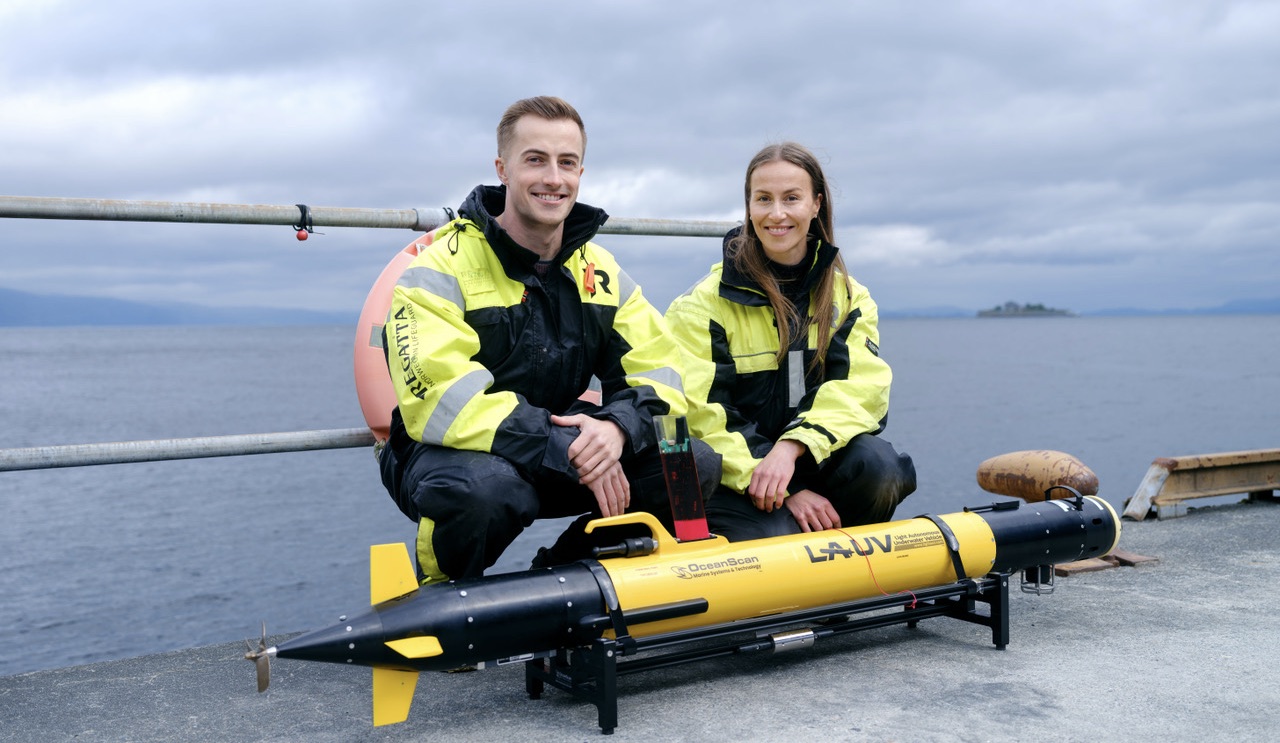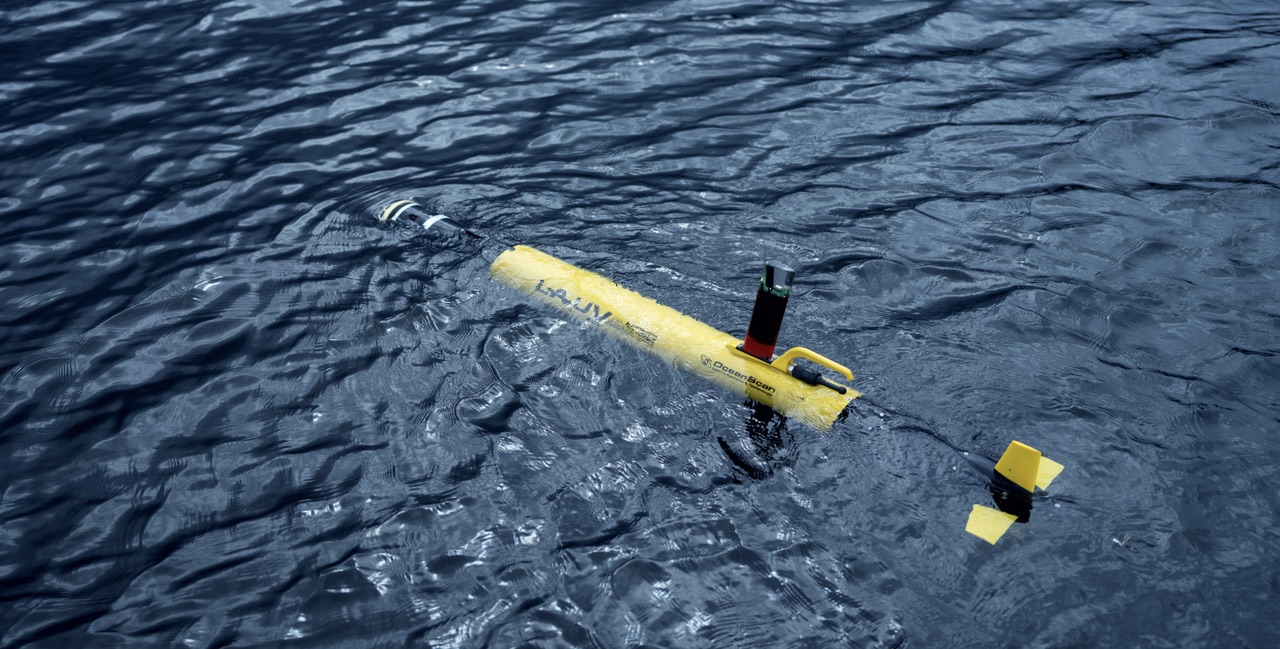LAUV Marie
MENU
LAUV Marie
LAUV Marie
LAUV Marie
LAUV-MARIE is part of the OceanScan LAUV (Light Autonomous Underwater Vehicle) family. With a depth rating of 200 m, it is capable of reaching deeper waters than other LAUVs operated at AUR-Lab.
The vehicle is equipped with two primary payloads:
- Marine Sonic Scout MKII 900 kHz sidescan sonar
- Imagenex 837B Delta T multibeam sonar
These systems make LAUV-MARIE particularly well-suited for:
- Acoustic geographical mapping
- Bathymetric mosaicking
- Detection and identification of bottom-lying targets.
For user-friendly operations, missions can be planned through the DUNE-based planning software, while the Triton smartphone app allows for convenient remote control.
Technical specifications
| Length | 215 cm |
| Weight in air | 34 kg |
| Maximum operational depth | 200 m |
| Battery | Li-ion, 6 × 173.6 Wh |
| Speed | 0.5–2.5 m/s |
| Typical endurance | 18 h at full throttle |
| Data storage | 1 TB (main CPU) + 1 TB (backseat CPU) |
| Connectivity | Iridium, WiFi, GSM/4G |
Sensors & Onboard Systems
| Main CPU | conga-PA7/i-x6414RE-4G eMMC32 544.048911 |
| CTD | AML X2Change (C,T & D) |
| IMU | Microstrain 3DMGX5 |
| Multiple receiver sonar system | Imagenex 837B DeltaT |
| Sidescan sonar | Marine Sonic Scout MKII 900 kHz |
| Doppler velocity logger | Nortek 398.DVL500C-P300m-ADCPoff |
| Forward-looking sonar | Imagenex 852 |
| User computer | NVIDIA Jetson Orin + 1 TB SSD |


